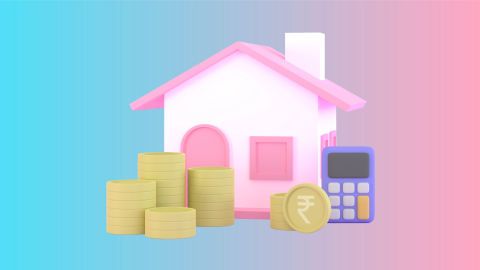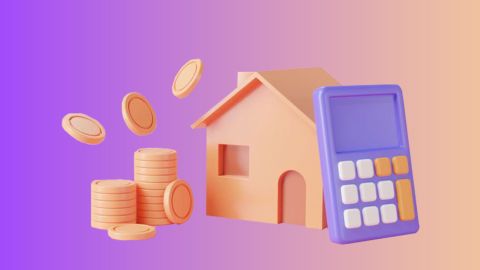Purchasing a home is one of the most significant financial decisions one can make. Most individuals rely on home loans to finance their dream homes, making it crucial to understand the repayment structure, especially when home loan EMI starts. This article provides a comprehensive overview of home loan EMI start dates, key timelines, and essential insights for potential homebuyers.
Introduction to home loan EMI
An EMI, or Equated Monthly Instalment, is a fixed payment amount a borrower pays to a lender at a specified date each month. This payment includes both the principal and the interest on the loan. Understanding when home loan EMI starts is vital for effective financial planning and ensuring a smooth home buying process.
Importance of knowing EMI start dates
Knowing when home loan EMI starts can help borrowers manage their finances better and plan for future expenses. For those considering a home loan, financial institutions like Bajaj Housing Finance offer attractive home loan options that cater to the needs of different borrowers, making it easier to finance your dream home seamlessly.
Key Timelines for Home Loan EMI Start
The start date of home loan EMI depends on various factors, including the type of property being financed and the terms of the loan agreement. Here’s a detailed breakdown:
1. Ready-to-move-in property
For ready-to-move-in properties, the EMI usually starts soon after the loan amount is fully disbursed. The timeline typically follows these steps:
- Loan approval and disbursement: Once the loan is approved and the amount is disbursed, the EMI payments start immediately from the next month.
- First EMI date: The specific date for the first EMI is mentioned in the loan agreement, generally within 30 days from the date of disbursement.
2. Under-construction property
For under-construction properties, the EMI structure is slightly different:
- Tranche-based disbursement: The loan amount is disbursed in stages based on the construction progress. This phased disbursement is known as tranches.
- Pre-EMI payments: During the construction period, borrowers pay only the interest on the disbursed amount, known as Pre-EMI. These payments continue until the full loan amount is disbursed or the property is ready for possession.
- Full EMI start: Once the entire loan amount is disbursed, or the property is completed and handed over, the full EMI, which includes both principal and interest, starts. The exact timeline for this transition is defined in the loan agreement.
Factors affecting the EMI start dates
Several factors influence when home loan EMI starts:
- Loan agreement terms: The loan agreement specifies the start date for EMI payments. It includes details about the disbursement schedule, Pre-EMI phase, and the transition to full EMI payments.
- Type of property: The type of property, whether it is ready-to-move-in or under-construction, significantly impacts the EMI start date. Ready-to-move-in properties have a more straightforward EMI schedule compared to under-construction properties.
- Lender policies: Different lenders have varying policies regarding loan disbursement and EMI start dates. It’s important to discuss these policies with your lender to understand how they apply to your specific loan.
- Borrower’s choice: Some lenders offer flexibility, allowing borrowers to choose between paying Pre-EMI or full EMI during the construction phase. This choice can affect the overall loan tenure and the total interest paid.
Types of home loan EMI payments
Home loan EMI payments can vary based on the repayment structure chosen by the borrower. Fixed-rate EMIs maintain a consistent payment amount throughout the loan tenure, while floating-rate EMIs fluctuate based on market interest rates. Understanding these distinctions aids borrowers in making informed decisions regarding loan repayment.
Pre-EMI vs. full EMI: What is the difference?
Pre-EMI and full EMI payments represent two distinct repayment models. Pre-EMI payments involve the payment of interest on the disbursed loan amount until the property's possession. Conversely, full EMI payments encompass both interest and principal components, commencing after possession. Evaluating the pros and cons of each model enables borrowers to select the most suitable repayment option.
How do I check when the home loan EMI starts?
To ascertain the home loan EMI starting date, borrowers can refer to the loan agreement provided by the lender. Additionally, online portals and customer service representatives offer assistance in accessing pertinent loan information. Regular communication with the lending institution ensures clarity regarding repayment timelines.
Step-by-step process to start your EMI
Initiating home loan EMI payments involves a systematic process:
- Review the loan agreement: Thoroughly examine the loan agreement to ascertain the EMI start date and repayment terms.
- Set up payment: Establish a payment mechanism aligned with the lender's requirements, whether through electronic transfers or post-dated checks.
- Monitor payment schedule: Regularly monitor the EMI payment schedule to ensure adherence to repayment obligations.
- Seek assistance: In case of any queries or discrepancies, promptly seek assistance from the lender's customer service team.
Explore Bajaj Housing Finance Home Loan
For those considering purchasing a home, exploring home loan options from reputable financial institutions can make the process more manageable. Bajaj Housing Finance offers attractive home loan options with flexible terms and competitive interest rates, helping you turn your dream of owning a home into reality.
Here are a few benefits of applying for a Bajaj Housing Finance Home Loan:
- Tailor your home loan to your specific needs with our flexible options, allowing you to customise your loan amount and repayment tenure, empowering you to achieve homeownership on your own terms.
- Benefit from competitive interest rates, starting at 7.99%* p.a. ensuring affordability and ease of management.
- Access additional funds through our top-up loan facility, allowing you to secure Rs. 1 crore* or higher, for home renovations or expansions with minimal documentation and attractive interest rates.
- Enjoy the convenience of extended repayment tenures of up to 32 years, providing flexibility to choose a repayment plan that suits your financial situation.
By choosing the right home loan, you can ensure a smooth transition from Pre-EMI to full EMI and enjoy the benefits of homeownership without financial stress.




